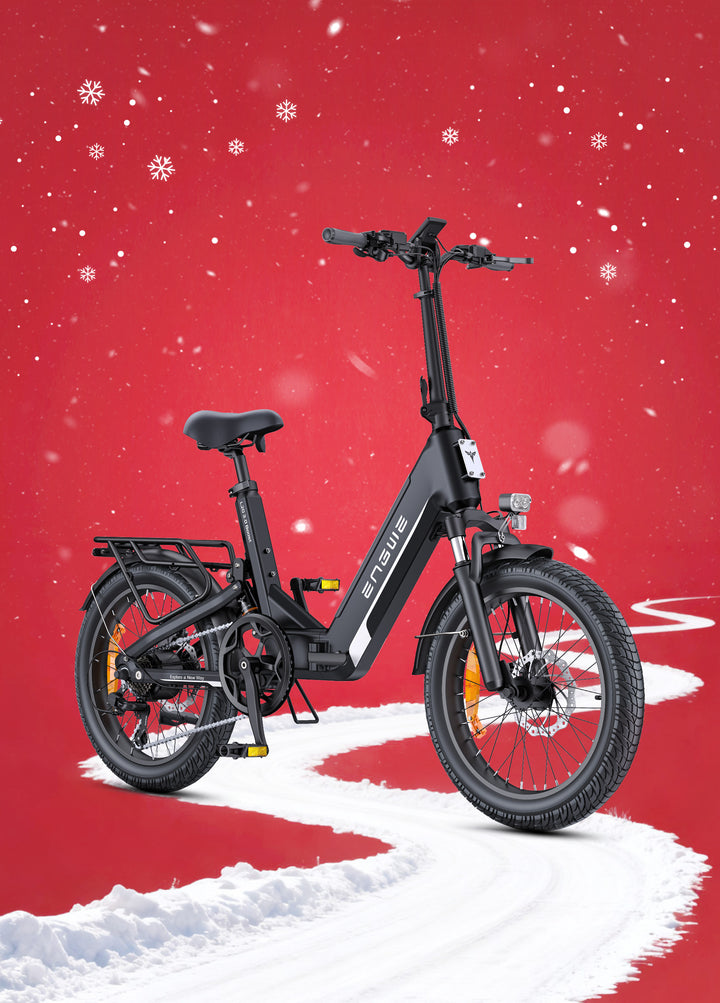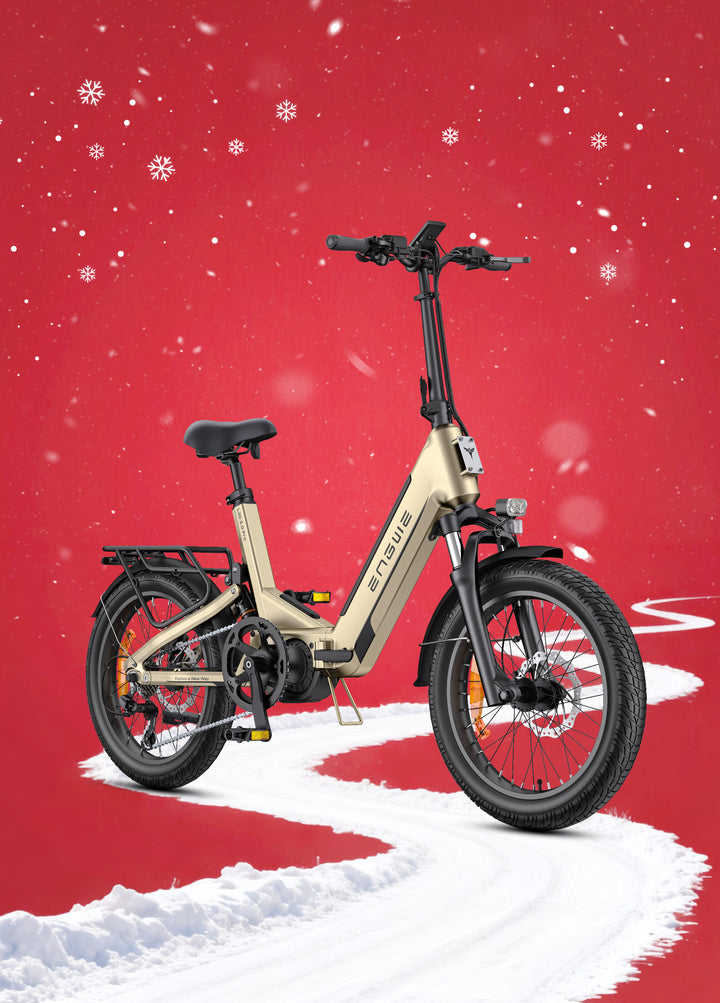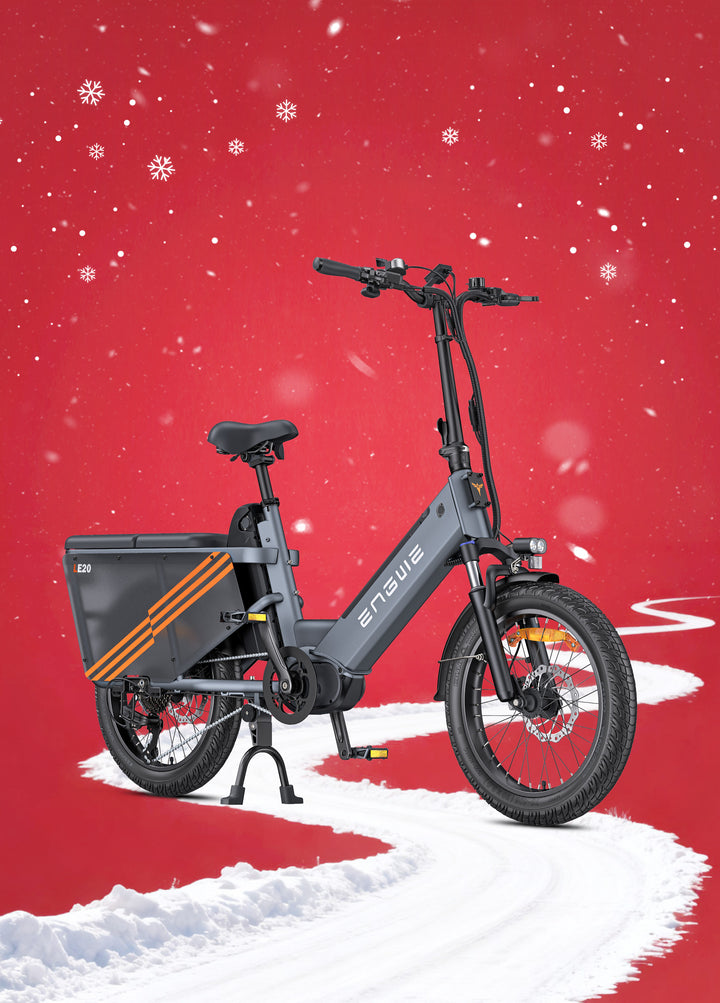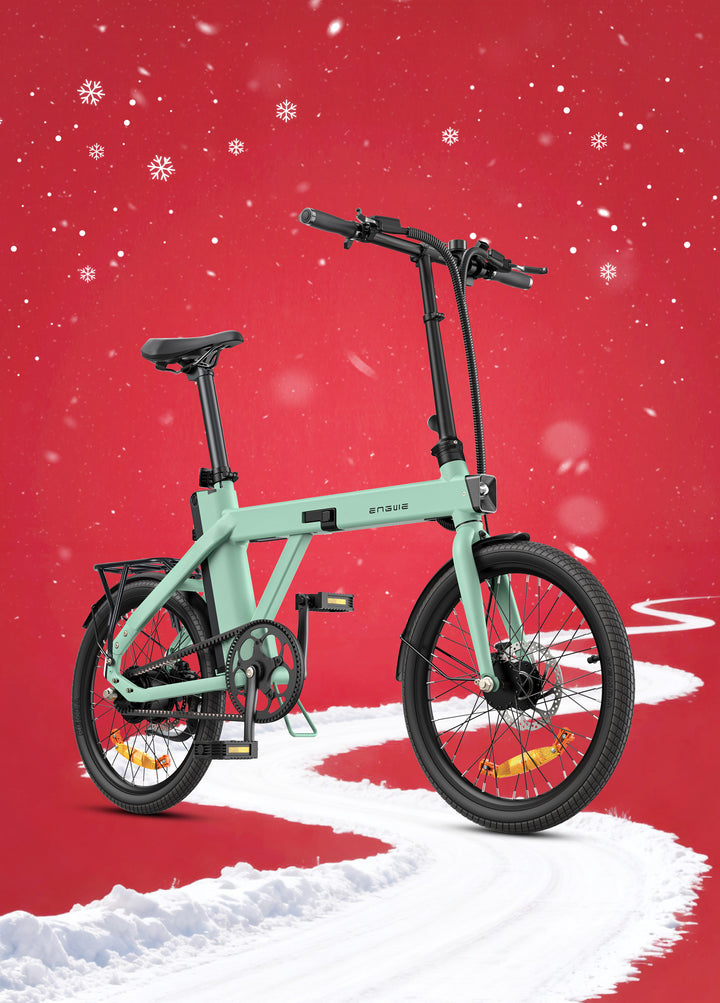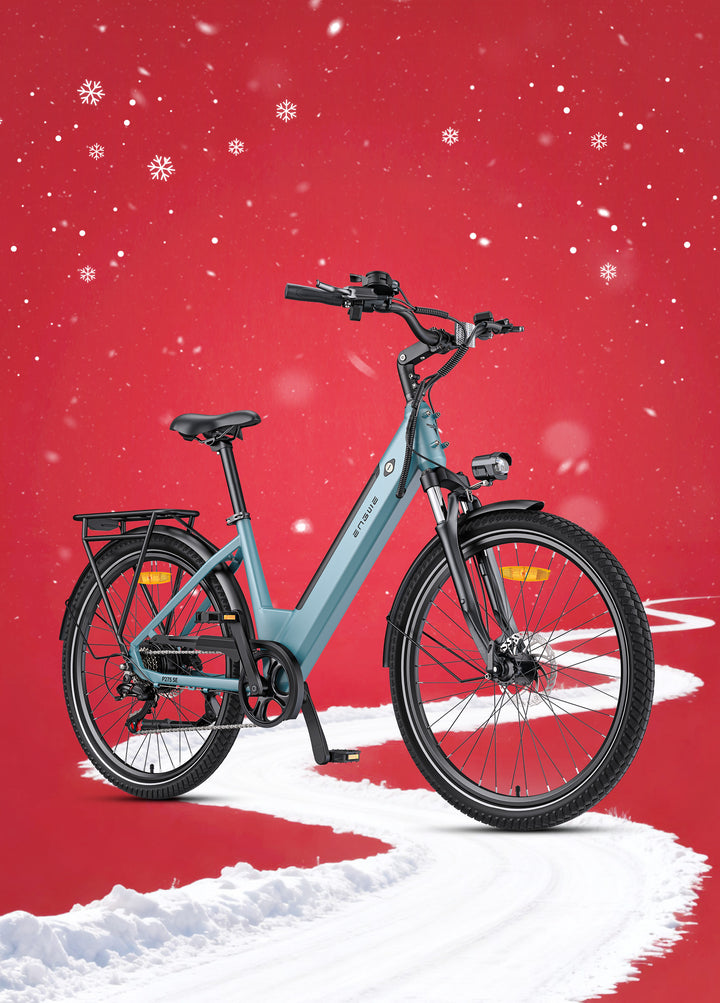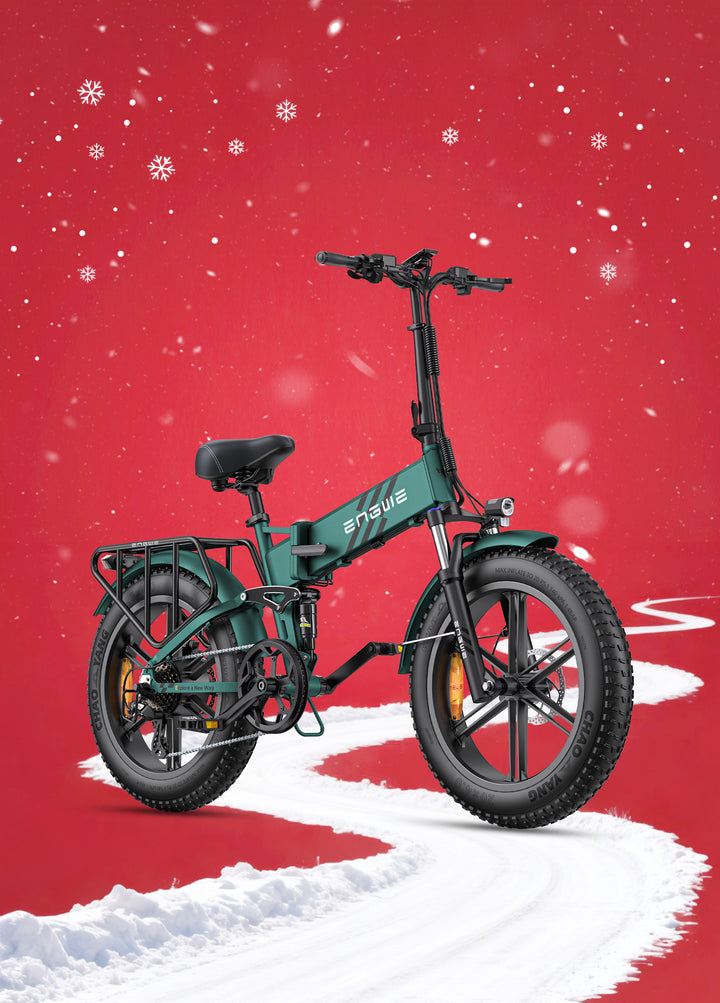The use of electric bikes has increased exponentially in recent years due to their many benefits. They are environmentally friendly, economical, and allow people to get around without having to deal with traffic. Moreover, the e-bikes with all-terrain fat tires can be used to explore whatever was previously inaccessible to you.
Speaking of which, one important consideration when purchasing an electric bike is the suspension.
If you're looking to learn about electric bike suspension, this is the article for you. We'll cover everything from the importance of suspension to its different types available on electric bikes to some tips on how to maintain it. By the end of this article, you should have a good understanding of how suspension affects your ride, and what kind of setup is best for you.
So, let's begin!
Why Suspension is Important for an E-Bike?
There are a few key reasons why suspension is so important for an electric bike.
First, it helps absorb shocks and jolts that can be experienced when riding over bumpy urban roads or uneven off-road terrains. Second, it helps keep the wheels in contact with the ground, which is important for traction and stability. Third, it helps improve the handling of the bike, making it easier to control.
A good suspension system also helps protect your bike frame from damage.
The suspension works by absorbing the kinetic energy generated by the impacts and dissipating it as heat. This helps dampen the bumps and makes for a much more comfortable ride, allowing you to use your bike for an extended period of time without tiring yourself out.
All of these factors together make suspension an essential part of any good electric bike, especially those meant for off-roading. Without it, the ride would be much less enjoyable and the bike would be more difficult to control.
So, to sum up, if you're looking for a smoother and more comfortable ride, good suspension is one of the things you need to look out for in an electric bike. With that being said, let's see what types of suspension systems are there.

Types of E-Bike Suspension Systems
There are four basic types of suspension systems: spring, hydraulic, rubber, and air. Each type has its own advantages and disadvantages, so it's important to choose the right one for your bike.
Spring suspensions are the cheapest and, therefore, the most common type of suspension. They're simple and reliable, and they offer a good balance of comfort and control. However, spring suspensions can be susceptible to harshness or 'aging' over time. Another downside is that they weigh a bit more. Still, they can work great when combined with another type of suspension.
Rubber suspensions are another option for those who want a smooth ride. Rubber suspension systems use rubber elements instead of springs, which gives them a very soft ride. However, they're not as durable as other types of suspension and can break down over time.
Air or pneumatic suspensions are more advanced than spring and rubber suspension systems. They use air (or a compressible gas) to achieve the dampening effect and are therefore very lightweight. However, they're one of the most expensive types of suspension and require regular maintenance. Their biggest downside is their susceptibility to frequent gas leakage.
Hydraulic suspensions are similar to pneumatic suspensions, but they use fluid instead of air. Hydraulic suspensions ensure a smoother and efficient ride and are very reliable and low-maintenance in nature. But they're also more expensive and complex. However, when you consider their long service life, they provide the best value for your money.
Types of Suspension Electric Bikes
When it comes to suspension electric bikes, you can have three options to choose from – electric bikes can have single, dual, or no suspension at all.
Single suspension electric bikes have a suspension fork in the front, while dual suspension electric bikes have both a front and rear shock. So, which is better? Well, let's find out, starting with rigid or no suspension electric bikes.
1. No Suspension Electric Bikes
Electric bikes without suspension cannot be ridden off the road, as they have little traction and riding them can also result in significant damages to your frame and your bearings. Moreover, these electric bikes offer a nasty experience on urban potholes and city bumps.
But still, they have a number of advantages as well.
First, they are much lighter than their counterparts with suspension, making them easier to transport and maneuver. Second, they are less expensive to purchase and maintain. Finally, they require less energy to pedal and are, therefore, suitable as road or racing electric bikes.
2. Front Suspension Electric Bikes
Front suspension electric bikes (also known as hardtail e-bikes) are a great option for those who want the perfect balance of cost, off-road capability and overall weight.
This is because these electric bikes can absorb most of the bumps and shocks that would otherwise be transferred to the rider to ensure a comfortable ride (even on rough terrain) while being more affordable (and more lightweight) than dual or full suspension electric bikes. They are, therefore, suitable for a majority of buyers.
The downside of single suspension electric bikes is that they don't offer as much shock absorption as dual or full suspension bikes, so they are (relatively) less capable off the road and can't be used for daring, adrenaline-pumping hard-core trailing.
3. Full Suspension Electric Bikes
Dual or full suspension electric bikes offer more comfort and control than front/ single suspension electric bikes, making them a great option for those who want to conquer the most rugged of terrains out there.
This is because the dual suspension system helps to keep the wheels in contact with the ground at all times, no matter how rough the terrain is. It means that you'll have more power and control over your bike, and can safely ride over all kinds of obstacles.
The only downside of dual suspension electric bikes is that they are heavier and more expensive than single suspension electric bikes. Moreover, beginners can find them more difficult to maneuver than single suspension electric bikes.
But for intermediate to advanced riders, a full suspension electric bike opens up a crazy world of possibilities, allowing them to explore what's simply out of bounds for others.

Which E-Bike Suspension Should I Get?
There are several things that you need to consider while choosing an electric bike with suspension.
First, consider the terrain you'll be riding on. If you'll be riding on rough, uneven terrain for most of the time, a full-suspension electric bike will be your best bet. But if you'll be riding on city roads for most of the time and will seldom head out to explore the hilly outskirts, a hardtail e-bike (with only front suspension) will suffice.
Next, consider the type of riding you'll be doing.
If you'll be doing mostly downhill riding, make sure to look for an e-bike with adjustable suspension. This way, you can dial in the amount of suspension you need to stay safe and comfortable on the trails. For cross-country riding, a lighter suspension (such as a hydraulic front fork) is often best so that you don't get bogged down on the uphills.
Finally, think about your budget. Full-suspension electric bikes tend to be more expensive than hardtails, so if money is tight, a hardtail may be the way to go. However, if you can swing it, a full-suspension electric bike will give you the best off-road experience possible.
If you know for sure that you'll never take your bike off the road EVER, you can even go for an electric bike with no suspension. But keep in mind that it will not be comfortable to ride over bumps and potholes. That's why we will only recommend you to get an e-bike without suspension when you're extremely low on budget.
Otherwise, we'd recommend you to go for an electric bike with at least a front fork – as it offers the best compromise between all extremes and offers a great value for money. This is why we at Engwe offer at least a front suspension in all of our e-bikes.
Which Suspension We Offer on Engwe E-Bikes?
Here are the types of suspension we offer in our electric bikes.
| ENGWE Electric Bike | Suspension |
| ENGWE EP-2 Pro | Front Suspension(Mechanical Spring Fork) |
| ENGWE Engine Pro 2.0 | Full Suspension (Locking Front Fork + Mid-mechanic Air Suspension + Seat Suspension) |
| ENGWE E26 | Full Suspension (Front + Rear Suspension) |
| ENGWE L20 | Front Suspension |
| ENGWE M20 | Full Suspension (Front Hydraulic Shock + Rear Air Shock Absorber) |
| ENGWE M1 | Full Suspension (Front + Rear Suspension) |
| ENGWE L20 Boost | Front Suspension |
| ENGWE P20 | - |
| ENGWE Engine X | Full Suspension (Front Hydraulic Fork + Rear Spring) |
| ENGWE P275 Pro | - |
| ENGWE P275 ST | - |
How to Maintain Your E-Bike Suspension?
In order to keep your bike in good working condition and make the most out of your suspension system, it is important for you to properly maintain your electric bike suspension. Here are some tips on how to do so:
- Regularly clean your suspension components with a soft cloth and mild soap. Be sure to rinse them thoroughly afterwards.
- Regularly lubricate all moving parts of your suspension with light oil or grease. This will help keep them moving smoothly and prevent premature wear.
- In case of pneumatic suspension, check the air pressure in your suspension forks regularly. The recommended air pressure will depend on your bike, so make sure to consult your owner's manual.
- In case of hydraulic suspension, regularly inspect your suspension for any leaks or damage. If you see any damage, take your bike to a qualified mechanic for repair.
By following these simple tips, you can help ensure that your electric bike suspension remains in good working condition for many years to come. With this, we will sign off. We hope it was an informative read!
You might also be interested in:
Difference Between Belt Drive Vs Chain E-Bike: Pick the Right One for Riding
A Comprehensive Guide About What Is A Pedelec
How to Use an E Bike: A Beginner's Guide to Riding

